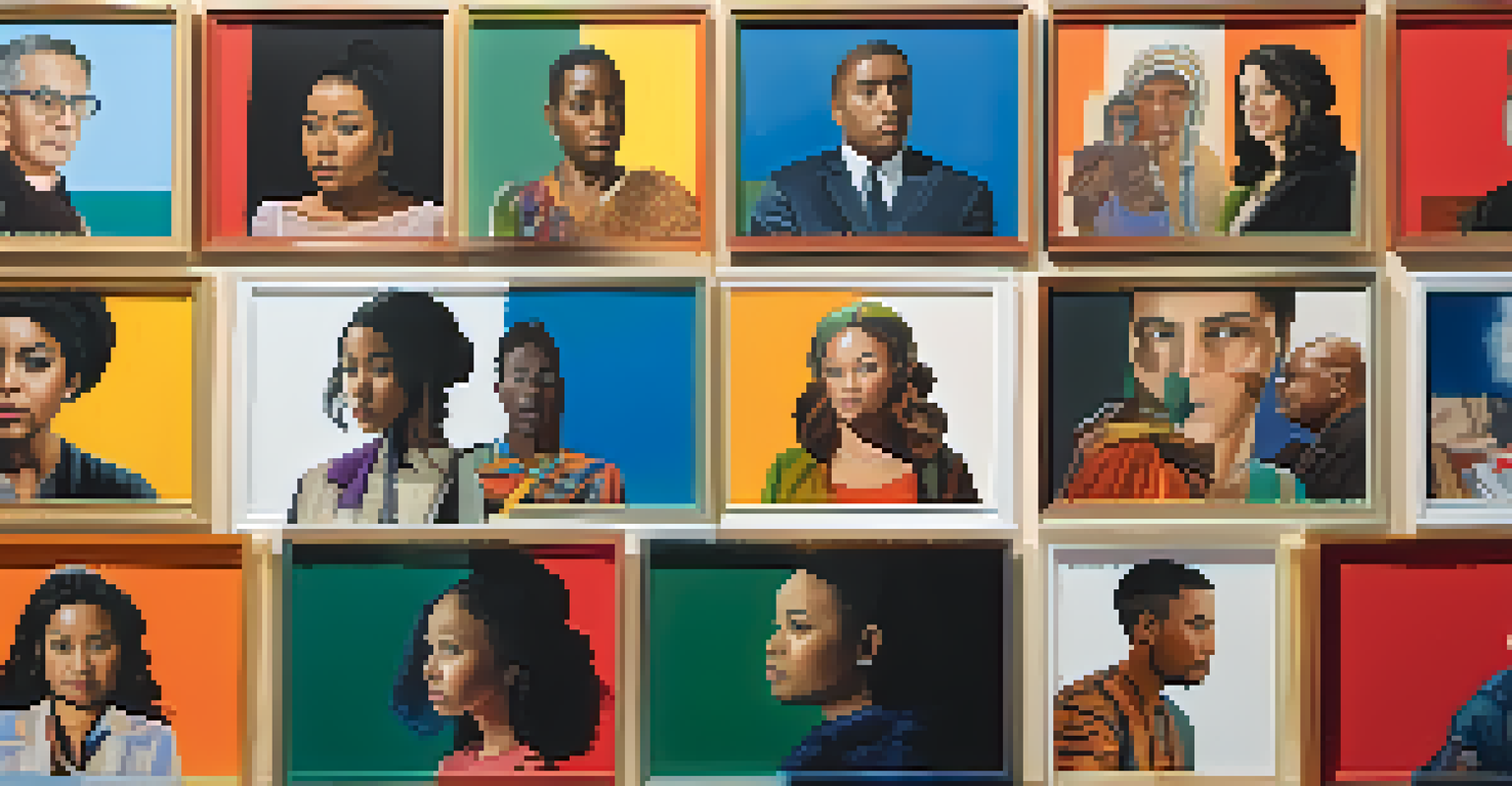The Impact of Film on Student Engagement in Classrooms Today

The Power of Visual Storytelling in Education
Film serves as a powerful medium of visual storytelling that captures students' attention. By presenting information in a narrative format, films make complex subjects more relatable and easier to understand. For instance, a documentary about climate change can evoke emotions and spur interest in environmental science, making students more engaged.
The greatest stories are not just told; they are felt.
Stories told through film often resonate with students’ personal experiences, creating a sense of connection. When learners see characters facing challenges similar to their own, they are more likely to become invested in the subject matter. This emotional engagement is crucial for effective learning and retention.
Moreover, visual storytelling can stimulate discussions and critical thinking. After viewing a film, students can analyze characters' decisions and the plot's impact, encouraging them to express their thoughts and opinions. This active participation fosters a dynamic classroom environment where students feel comfortable sharing.
Enhancing Creativity Through Film Analysis
Analyzing films can significantly boost students' creativity and imagination. By dissecting elements like cinematography, sound, and editing, students learn to appreciate the artistry behind filmmaking. This not only enriches their understanding of media but also encourages them to express their own creative ideas.

For example, a film analysis assignment can prompt students to create their own short films, applying the techniques they've learned. This hands-on approach not only reinforces their understanding but also nurtures skills like collaboration and problem-solving. Students feel empowered when given the opportunity to produce a piece of art based on their insights.
Visual Storytelling Engages Students
Films make complex subjects relatable and spark emotional engagement, enhancing student interest and retention.
Furthermore, such creative projects can lead to a deeper exploration of themes and messages. When students create narratives, they engage with the material on a personal level, allowing them to explore their own perspectives. This connection enhances their overall learning experience and fosters a love for storytelling.
Film as a Tool for Diverse Learning Styles
Every student has a unique learning style, and film caters to various preferences. Visual learners benefit from the imagery and movement in films, while auditory learners engage with dialogue and soundtracks. Kinesthetic learners can also find inspiration in film projects, where they can enact scenes or create their own interpretations.
Films can be a powerful way to convey messages and provoke thought, making them an invaluable educational tool.
By incorporating films into the curriculum, educators can create a more inclusive environment. For instance, a history class may use historical films to illustrate events, making it more tangible for students. This diversity in teaching methods allows all students to connect with the material in a way that resonates with them.
Additionally, films can bridge cultural gaps and introduce students to perspectives outside their own. This exposure fosters empathy and understanding, essential skills in today's global society. When students engage with films from different cultures, they broaden their horizons and enrich their learning journey.
Promoting Discussion and Collaboration in Classrooms
Films can serve as excellent catalysts for discussion and collaboration among students. After watching a film, teachers can facilitate group discussions that encourage students to share their viewpoints. This collaborative approach not only deepens understanding but also builds communication skills, which are vital in any educational setting.
For example, a film about social justice can lead to a classroom debate about its themes and implications. Students who feel comfortable discussing their thoughts are more likely to engage actively in their learning. This environment fosters critical thinking as students learn to articulate and defend their opinions.
Film Analysis Boosts Creativity
Dissecting films fosters creativity and collaboration, empowering students to express their ideas through artistic projects.
Moreover, collaborative projects inspired by films can enhance teamwork skills. When students work together to create a film or presentation based on a shared topic, they learn to negotiate ideas and respect diverse viewpoints. This teamwork not only enriches the learning experience but also prepares them for future collaborative endeavors.
Integrating Technology: Film and Digital Learning
The integration of technology in education has transformed how films are used in classrooms. With the availability of streaming services and educational platforms, educators can access a vast array of films to supplement their lessons. This ease of access ensures that students can engage with relevant content anytime and anywhere.
For instance, teachers can assign films as homework, allowing students to watch at their convenience and come prepared for discussion. This flexibility creates a more dynamic classroom experience, encouraging students to engage with the material outside traditional classroom hours. Additionally, technology-driven assignments can include film reviews or digital presentations, enhancing digital literacy.
Furthermore, the use of film in online learning environments has become increasingly important. As remote and hybrid learning models gain traction, films can break up lectures and maintain student interest. Incorporating engaging visual content can help educators create a more interactive and enjoyable online learning experience.
Cultivating Critical Thinking Through Film Interpretation
Film interpretation requires students to engage in critical thinking, a skill essential for academic success. When students analyze a film's themes, characters, and cinematography, they are encouraged to think deeply and draw connections to real-world issues. This analytical process helps develop their ability to evaluate information critically.
For example, after watching a film about historical events, students can discuss the accuracy of its portrayal and the filmmakers' choices. This kind of analysis prompts them to consider bias, perspective, and the context in which the film was made. Such discussions aid in developing a well-rounded view of the subject matter.
Film Cultivates Empathy and Insight
Exposure to diverse narratives in films helps students build empathy and understanding, preparing them for a global society.
Moreover, critical thinking nurtured through film analysis has long-term benefits. Students learn to question information and seek evidence, skills that are invaluable in today’s information-rich world. By honing these skills through film, students become more discerning consumers of media and information.
Building Empathy and Understanding Through Film
One of the most profound impacts of film in education is its ability to build empathy and understanding among students. By showcasing diverse experiences and cultures, films can open students' eyes to viewpoints they may not encounter in their daily lives. This exposure fosters a sense of compassion and encourages students to appreciate the richness of human experience.
For instance, films that address social issues can inspire students to reflect on their values and beliefs. When students see stories of resilience and struggle, they're prompted to consider the challenges faced by others. This emotional engagement can lead to meaningful conversations about social justice and equity.

Creating a classroom environment that prioritizes empathy can have lasting effects beyond academics. When students learn to understand and respect differing viewpoints, they cultivate a more inclusive community. This mindset prepares them for future interactions in a diverse world and equips them with the tools to become responsible global citizens.